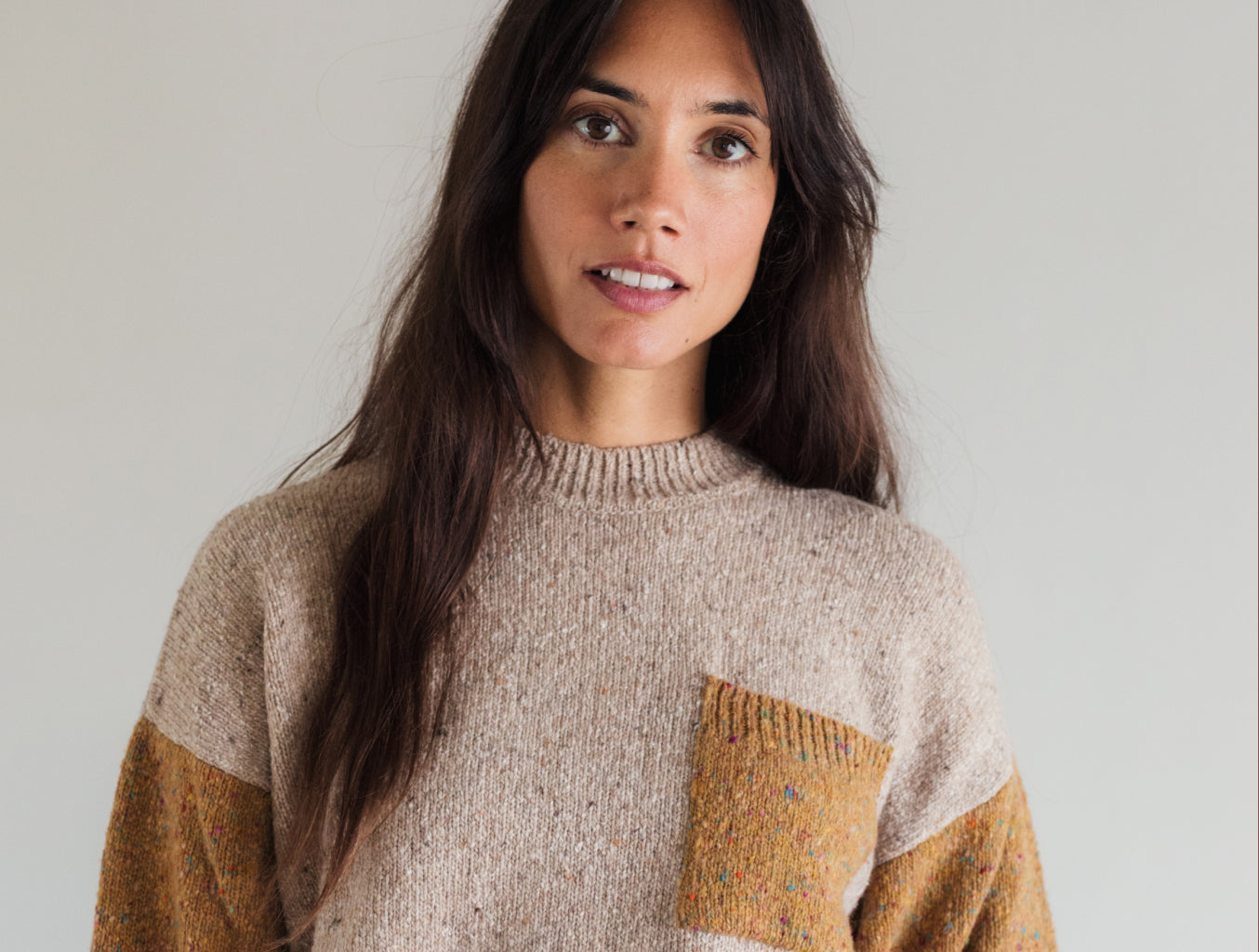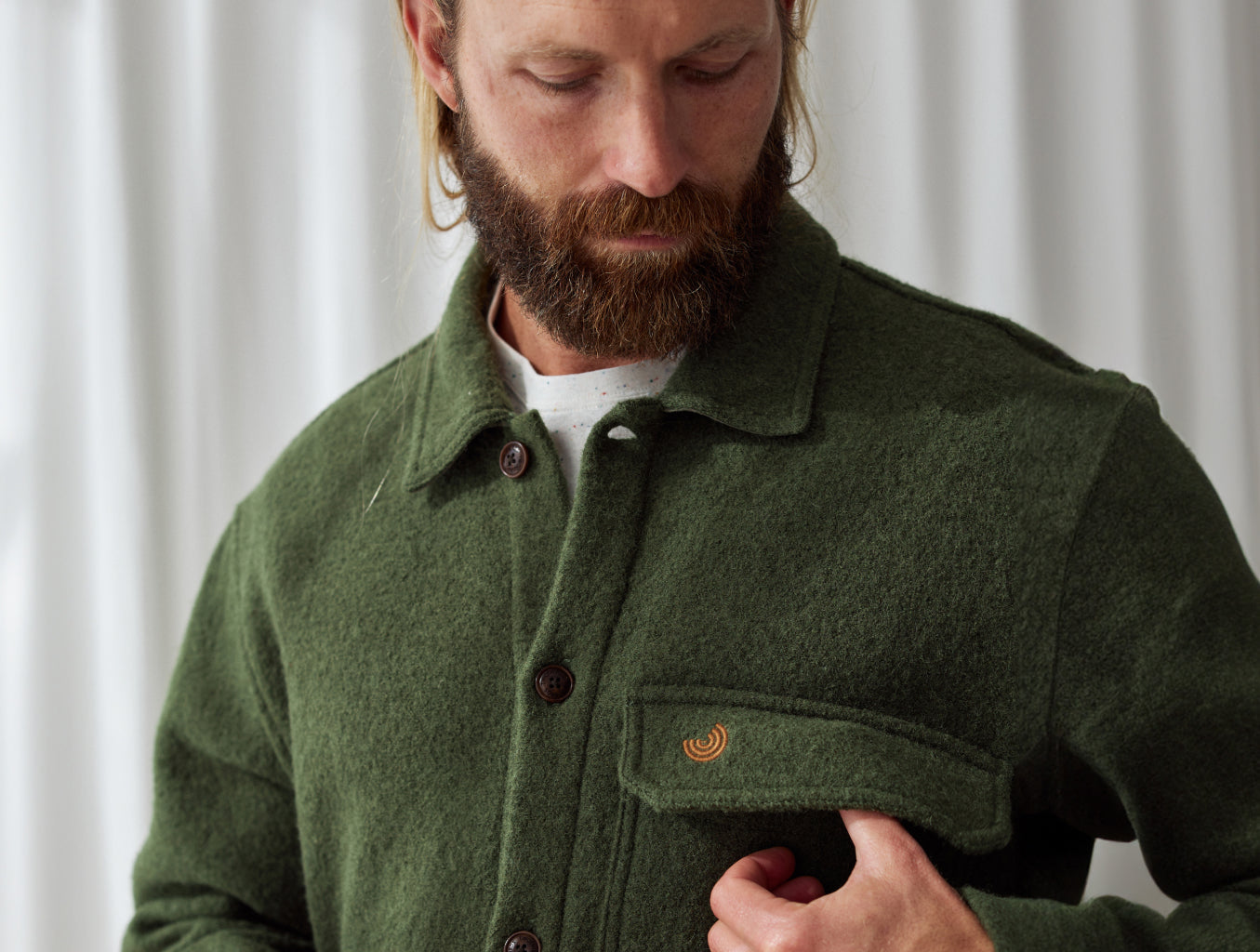Guess what? Our autumn collection has just launched! And while we’re still craving the cold here in the humid heights of Barcelona, we know that the rest of Europe (and indeed parts of the USA) is beginning to cool off. Plus, if the extreme heat of summer is anything to go by, we could be in for a very long and intense winter. For lovers of sustainability, the question then becomes: how to stay warm without warming the planet?
To help, we’re providing you with an overview of the warmest sustainable fabrics around, all of which you’ll find in our eco-friendly collections.
Shetland Wool
To be a Shetland sheep facing bitter weather conditions, you’ve got to have grit, determination and a thick coat of warm wool. It’s for this reason that Shetland Wool is probably the warmest natural fibre out there. As it is sourced exclusively in the Shetland Islands, Scotland - there’s no mulesing involved. Mulesing is a widely criticised technique in which skin from the sheep’s rear end is removed (often without anaesthesia) to prevent flystrike. It’s illegal in the UK.
Shetland Wool also ticks several other sustainability boxes, including being durable and hard-wearing. Its thick, robust fibres make it a great ‘investment’ material that will last a long time. Our Shetland Wool coats come in a variety of thicknesses, from a lightweight 390gsm to a Nordic 700gsm, suiting the range of cold temperatures that our community is used to. Gsm means “gram per square metre” (ie. weight) and is how we differentiate between the warmth of our wool fabric.
Worried about itchiness? We’ll often line our wool coats with smooth organic cotton or recycled polyester.
Merino Wool
What better way to complement your new wool coat than with a colourful Merino beanie? This thermoregulating fabric reacts to the body’s temperature to keep you warm in winter and cool in summer. Merino Wool is also softer and lighter than Shetland Wool, making the fibre ideal for warm accessories or soft knits.
Our merino wool is also mulesing-free. Both types of wool can absorb up to 35% of their own weight in water and are naturally self-cleaning. Wool is biodegradable too. It is wool’s insulatory, durabile, and natural properties that make it an essential warm sustainable fabric.
Organic cotton corduroy
Not a fan of animal products? We understand, and that’s why organic cotton corduroy is next on our list of warm sustainable fabrics. Vegan, versatile and visually pleasing, organic cotton corduroy offers a good level of thickness for lighter jackets and comfy trousers. Micro corduroy can also elevate the warmth of your shirts, making them perfect for autumn.
Organic cotton corduroy is made from cotton that doesn’t compromise the environment. That means: reduced water usage and no fossil-fuel based pesticides or fertilisers, keeping both soil and waterways healthy.
Organic cotton twill
Many of our sustainable jackets and overshirts are made from organic cotton twill. This robust material brings together thickly woven organic cotton fibres that form a barrier against the cold. We often treat it with Teflon EcoElite™, which adds an extra layer of defence and water repellency.
Equally important to a sustainable autumn/winter is regular organic cotton! We make eco-friendly sweats out of organic cotton, which are soft and cosy. We also use organic cotton fleece for loungewear styles to make you feel right at home in your favourite sustainable clothing.
All our organic cotton garments are vegan.
Recycled Polyester (Sherpa)
You’ve probably heard of sherpa fleece. But did you know that this insulating and fluffy material can be made from recycled plastics? Which makes it ideal for lining sustainable autumn jackets or even creating some of our fluffiest styles! This sustainable fleece fibre traps and retains heat, making it an excellent extra layer of insulation.
Using a basic formula, we can estimate that there’s 22, 2-litre plastic bottles in every 1kg of recycled polyester, making it one of the most effective recycled materials at our disposal - for the sheer quantity of waste saved! Recycling plastic also helps to mitigate the use of fossil fuels (a key ingredient in the production of synthetic fibres) and saves resources used in manufacturing - such as water and energy.
This one’s vegan too!
Recycled Wool
Yes, 3 out of 6 of our warmest sustainable fabrics are indeed wool-based. Wool might be nature’s greatest gift to humankind’s battle against the cold but critics have said it involves land clearance and emits large amounts of greenhouse gases. The good news? Thanks to partnerships with European mills like du Parc, Milefilli, and Manteco, we’re able to make some styles using recycled wool blends. These warm sustainable garments often consist not only of wool, but recycled polyamide, recycled cashmere, recycled cotton, and more! By blending the fibres together - you get a more resilient fabric that makes the most of various types of textile waste.
Sadly, this does mean that the final garment is not biodegradable or recyclable. On the other hand - great savings are made in terms of resources. For example, Millefili estimates that their “Eco Sudoku” yarn produces 70% less CO₂ and requires 20% less water than a virgin yarn of comparable quality.












